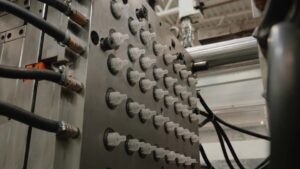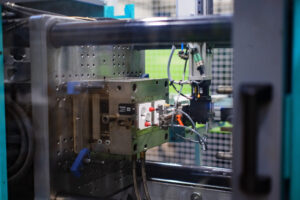3D Printing vs. Injection Molding: Choosing the Right Method for Your Next Product
Bringing a product to life involves a series of crucial decisions, and one of the most impactful is choosing the right manufacturing method. Whether you’re prototyping a new idea or preparing for large-scale production, understanding the differences between 3D printing and injection molding is essential. Each approach offers unique benefits depending on factors like production volume, design complexity, and budget.vIn this article, we’ll explore when to choose each method and how they complement other key services like electronics assembly to support a streamlined product development process.
Understanding the Processes
3D printing, or additive manufacturing, involves creating objects layer by layer based on a digital design. It’s fast, flexible, and ideal for prototyping or small-batch production. Our 3D printing service is frequently used for early-stage product development, especially when speed and design freedom are essential.
Injection molding, on the other hand, is a traditional and highly efficient method for producing large quantities of identical parts. Molten plastic is injected into a custom mold, creating durable, high-quality components at scale. We specialize in injection molding for clients looking to mass-produce parts with tight tolerances and excellent surface finishes.
When to Choose 3D Printing
3D printing is the best option when you need speed and flexibility. It’s commonly used in the following situations:
- Rapid Prototyping. 3D printing allows for a fast turnaround of early design concepts. If you’re still testing and refining a product, it enables you to make changes quickly without costly tooling.
- Low-Volume or Custom Production. When you only need a few dozen or a few hundred parts, 3D printing is often more cost-effective than injection molding. It’s also perfect for personalized or one-off components.
- Complex Geometries. Designs that are difficult or impossible to mold – such as parts with internal channels or unconventional shapes – can often be produced easily with 3D printing.
- Accelerated Electronics Assembly. For clients working on devices that require enclosures or housing for internal components, 3D printing allows us to create tailored solutions that integrate seamlessly with the electronics.
This method supports agile development, allowing our clients to innovate quickly and test real-world functionality before committing to mass production.
When to Choose Injection Molding
Injection molding becomes the clear choice once your design is finalized and you’re ready to move into full production. It’s ideal for:
- High-Volume Manufacturing. Once the mold is created, injection molding can produce thousands – or even millions – of identical parts with exceptional efficiency. The upfront tooling investment is offset by low per-unit costs in large quantities.
- Consistent Quality and Precision. For products that require exact dimensions, high durability, or structural strength, injection molding delivers unmatched consistency. It’s widely used in the automotive, medical, and consumer electronics industries.
- Superior Surface Finishes. Injection molded parts typically have cleaner finishes and require less post-processing, which is critical for visible or user-facing components.
- Long-Term Cost Savings. Although the initial tooling can be expensive, the cost per part dramatically decreases as production volume increases, making injection molding the most economical option for ongoing product lines.
How We Integrate Both Methods at Artilux NMF
At Artilux NMF, we offer both 3D printing and injection molding as part of our end-to-end manufacturing capabilities. Many of our projects begin with 3D printed prototypes, move into testing and electronics assembly, and ultimately shift into injection molding for mass production.
This approach allows our clients to validate their ideas quickly, test their products thoroughly, and scale efficiently – all with one trusted manufacturing partner.
We also support design for manufacturability (DFM), where we help optimize your design to suit the most efficient production method, whether it’s additive or traditional.
Making the Right Choice for Your Product
If you’re at the beginning of the product development cycle, 3D printing can help you innovate faster, reduce risk, and improve your final design. If your product is already market-ready and you’re planning to produce it in volume, injection molding will provide the speed, cost-efficiency, and quality you need.
For some projects, a combination of both methods is the best solution. That’s why we always begin with a conversation – to understand your goals, your product’s complexity, your timeline, and your budget.
Work with a Partner Who Offers Both
Choosing the right manufacturing process is easier when you work with a partner who understands both. At Artilux NMF, we don’t just offer these services – we help you determine when and how to use them effectively.
From prototyping with our 3D printing service to scaling production with high-precision injection molding, and integrating components through advanced electronics assembly, we provide the full support you need to bring your product to life.


